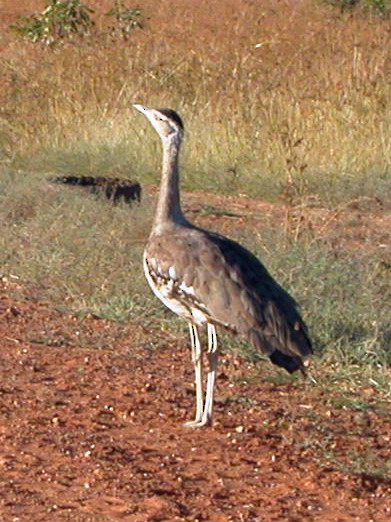Facts About Australian bustard
The Australian bustard, often known as the plains turkey, is a captivating large bird that inhabits the grasslands, woodlands, and open agricultural areas of northern Australia and southern New Guinea. This nomadic species covers vast distances in its quest for food. Unfortunately, while once abundant, its population has decreased in more populated regions due to colonization.
An omnivore, the Australian bustard has a diverse diet that includes plants, invertebrates, and small animals. Initially described by John Edward Gray in 1829, the bird has been classified under several different genera over the years. It is also known by other names such as wild turkey and native turkey, alongside various names in Aboriginal languages.
In terms of appearance, the Australian bustard is a striking bird, somewhat resembling an American turkey with its distinctive black, gray, and brown plumage. Males are significantly larger than females, differing in both size and weight. Unlike many other birds, the Australian bustard does not build nests. Instead, it lays one or two eggs directly on the ground, typically near shrubs. During the breeding season, males engage in elaborate displays with booming calls and visual presentations to attract females.
The preferred habitats of the Australian bustard include open grasslands, spinifex plains, and low shrublands. Although still relatively common in northern Australia, the bird’s range has contracted in the southeast due to hunting, feral predators, and habitat loss. While the IUCN lists the species as of least concern, its conservation status varies regionally, with some states considering it endangered or near threatened.
Culturally, the Australian bustard holds significant importance for Aboriginal peoples, who hunt it for food and incorporate it into ceremonies. It features prominently in Dreaming stories and Aboriginal art. Historically, the bird was also hunted by settlers, prompting the enactment of protective legislation to help preserve its population. Reflecting its historical presence, the Turkey Flat winery in the Barossa Valley is named after the Australian bustard.
